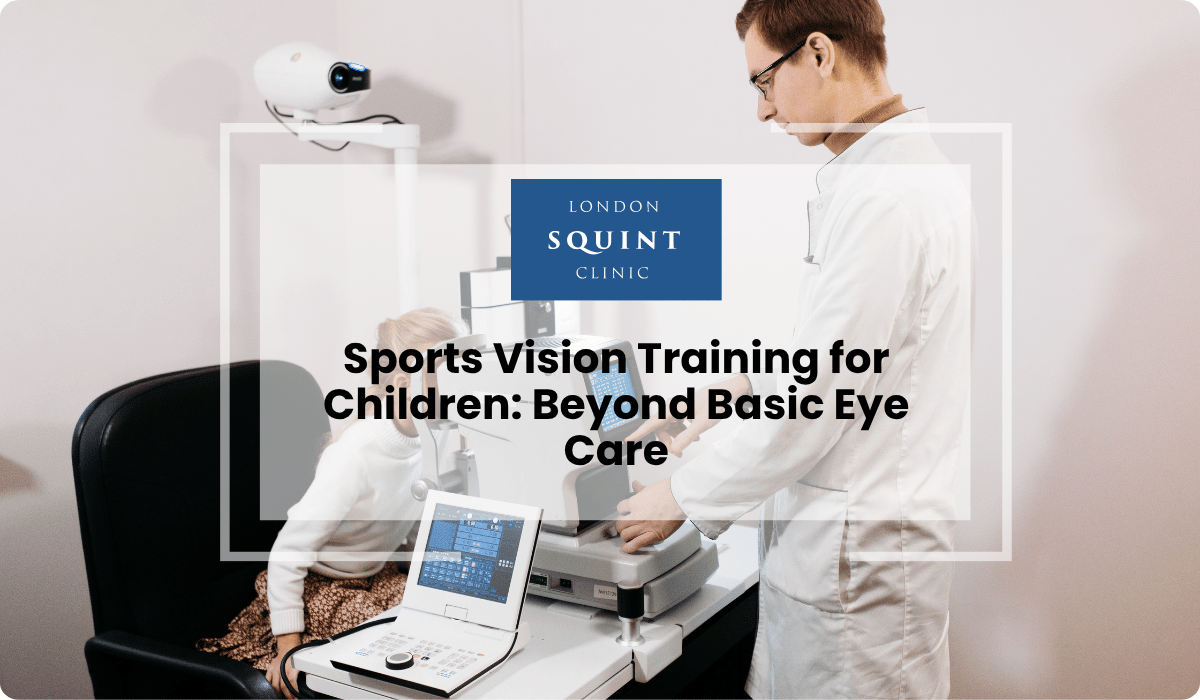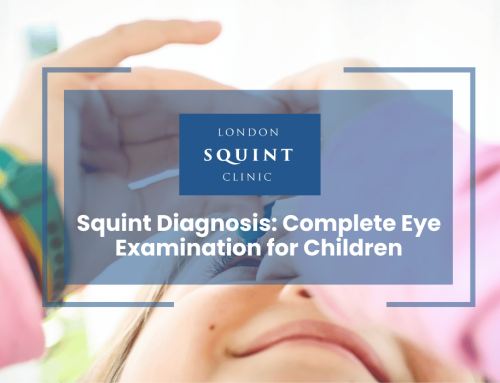Sports Vision Training for Children: Beyond Basic Eye Care
Essential Insights: Vision Training for Young Athletes
- Sports vision training targets specialized visual-motor skills beyond standard eye care, taking advantage of children’s neural plasticity during developmental years.
- Key visual skills for athletic performance include hand-eye coordination, depth perception, visual tracking, peripheral awareness, and visual concentration.
- Research confirms vision training produces measurable improvements in sports performance when properly integrated with physical training.
- Age-appropriate exercises should progress in complexity from playful foundational activities (ages 5-8) to sport-specific training for adolescents (13-16).
- Identifying visual skill deficiencies requires careful observation during play and formal assessments using specialized equipment.
- Effective implementation uses a three-tiered approach: team-based activities, position-specific training, and individualized development programs.
Table of Contents
- What Is Sports Vision Training and Why Children Need It
- Key Visual Skills That Impact Athletic Performance in Kids
- How Sports Vision Training Differs from Regular Eye Care
- Can Vision Training Really Improve Sports Performance?
- Age-Appropriate Vision Exercises for Young Athletes
- Identifying Visual Skill Deficiencies in Children’s Sports
- Integrating Vision Training into Youth Sports Programs
What Is Sports Vision Training and Why Children Need It
Sports vision training for children represents a specialised approach to enhancing visual skills that directly impact athletic performance. Unlike standard eye care that focuses primarily on visual acuity and eye health, sports vision training targets the development of specific visual-motor skills essential for sporting excellence.
Children’s visual systems continue developing throughout childhood and adolescence, making this an optimal period for visual skill enhancement. The neural plasticity present during these formative years allows for significant improvements in visual processing, tracking, and coordination when proper training is implemented.
Young athletes rely heavily on visual information to make split-second decisions during play. Whether tracking a moving football, judging the distance to a basketball hoop, or anticipating an opponent’s movements in tennis, superior visual skills provide a competitive advantage that extends beyond natural athletic ability.
For children with existing visual challenges such as mild squints or convergence insufficiency, sports vision training can be particularly beneficial, complementing traditional treatments while enhancing performance. This specialised training helps bridge the gap between basic visual function and the enhanced visual skills required for sporting excellence.
Key Visual Skills That Impact Athletic Performance in Kids
Athletic success in children relies heavily on several fundamental visual skills that can be systematically developed through targeted training. Understanding these core visual abilities helps parents and coaches recognise their importance in sports performance.
Hand-eye coordination stands as perhaps the most recognised visual skill in sports. This complex ability allows children to synchronise visual information with physical movements, essential for activities like catching, hitting, or kicking a ball. Closely related is visual reaction time—the speed at which a young athlete processes visual information and initiates an appropriate motor response.
Depth perception plays a crucial role in spatial judgement, allowing children to accurately assess distances on the playing field. This three-dimensional visual skill helps young athletes determine how far to throw, when to jump, or how to position themselves relative to moving objects and other players.
Visual tracking enables children to follow moving objects smoothly and accurately across their visual field. In sports with fast-moving balls or opponents, superior tracking abilities can make the difference between successful interception and missed opportunities.
Peripheral vision awareness allows young athletes to maintain focus on a primary target while simultaneously monitoring activity in their surrounding visual field. This skill proves invaluable in team sports where awareness of teammates and opponents outside the central field of vision provides tactical advantages.
Visual concentration and focus permit children to maintain attention on relevant visual targets despite distractions. This cognitive-visual skill helps young athletes maintain performance consistency even in challenging environments with multiple competing visual stimuli.
How Sports Vision Training Differs from Regular Eye Care
Sports vision training represents a specialised extension of traditional eye care, focusing on performance enhancement rather than simply correcting vision deficiencies. While regular paediatric eye examinations assess visual acuity, eye health, and basic binocular vision, sports vision training builds upon this foundation to develop sport-specific visual skills.
Standard eye care typically addresses refractive errors through glasses or contact lenses, ensuring children can see clearly. In contrast, sports vision training assumes basic visual clarity is established and works to enhance how effectively the brain processes, interprets, and responds to visual information during athletic activities.
The assessment protocols also differ significantly. Regular eye examinations use standardised tests in controlled environments, while sports vision evaluations incorporate dynamic, sport-specific visual challenges that mimic actual playing conditions. These specialised assessments measure functional visual skills like reaction time, peripheral awareness, and visual-motor integration that standard eye tests don’t typically evaluate.
Treatment approaches diverge as well. Traditional eye care might recommend vision therapy or eye patching for conditions like amblyopia, focusing on correcting visual dysfunction. Sports vision training, however, employs progressive, sport-specific exercises designed to enhance visual performance beyond normal levels, even in children with already excellent baseline vision.
Perhaps most importantly, the goals differ fundamentally. Regular eye care aims to establish normal visual function, while sports vision training seeks to develop superior visual abilities that provide competitive advantages in specific sporting contexts.
Can Vision Training Really Improve Sports Performance?
The evidence supporting sports vision training’s effectiveness in enhancing children’s athletic performance continues to grow. Research demonstrates measurable improvements in key visual-motor skills that translate directly to better sporting outcomes when training programmes are properly implemented.
Studies examining young baseball players have shown significant improvements in batting averages following structured vision training programmes that enhanced tracking abilities and visual reaction times. Similarly, research with young football players has demonstrated improved passing accuracy and decision-making speed after training focused on peripheral awareness and depth perception.
The neurological basis for these improvements lies in the concept of neuroplasticity—the brain’s ability to reorganise neural pathways in response to training. Children’s developing visual systems show particularly strong adaptability, allowing for substantial gains when visual skills are systematically challenged through progressive exercises.
Case studies from elite youth sports programmes further support these findings. Young athletes who incorporate regular vision training typically demonstrate enhanced anticipation, fewer visual-motor errors, and greater consistency in performance compared to peers who receive only traditional physical training.
It’s important to note that vision training produces the most significant results when integrated with proper physical training and technical instruction. The visual system works in concert with motor skills, tactical understanding, and physical capabilities to produce athletic excellence. When all these elements are developed systematically, young athletes often experience performance improvements that exceed what could be achieved through physical training alone.
Age-Appropriate Vision Exercises for Young Athletes
Effective sports vision training for children must be tailored to their developmental stage, with exercises progressing in complexity as visual skills mature. For younger children (ages 5-8), foundational exercises focus on building basic visual-motor integration through playful activities that maintain engagement while developing skills.
Ball-and-wall exercises represent an excellent starting point, where children throw tennis balls against a wall and catch them, gradually reducing ball size and increasing speed as skills improve. For this age group, incorporating coloured targets and varied throwing patterns helps develop basic tracking and hand-eye coordination in an enjoyable format.
For middle-years children (ages 9-12), more structured exercises become appropriate. Reaction ball drills using specialised balls with unpredictable bounces challenge visual processing speed and adaptability. Peripheral awareness exercises using light boards where children maintain central fixation while responding to peripheral stimuli help develop the visual field awareness crucial for team sports.
Adolescent athletes (13-16) benefit from sport-specific visual training that closely mimics competitive situations. Computer-based training programmes that measure and enhance visual reaction time, multiple-object tracking exercises that develop divided attention, and stroboscopic training using specialised eyewear that intermittently blocks vision all provide advanced challenges appropriate for this age group.
Regardless of age, proper progression principles remain essential. Training should begin with mastery of basic skills before advancing to more complex challenges. Sessions should be kept relatively short (15-30 minutes) but frequent (3-5 times weekly) to maximise skill development while maintaining engagement. Most importantly, exercises should incorporate elements of play and competition to ensure young athletes remain motivated throughout the training process.
Identifying Visual Skill Deficiencies in Children’s Sports
Recognising visual skill limitations in young athletes requires careful observation both during practice and competitive play. Certain performance patterns often signal underlying visual processing challenges that may benefit from targeted training interventions.
Consistent difficulties with ball interception despite adequate physical skills frequently indicate tracking problems or depth perception issues. Children who regularly misjudge the speed or trajectory of moving objects, particularly in variable lighting conditions, may have visual timing deficiencies rather than purely motor coordination problems.
Spatial awareness challenges manifest when young athletes consistently position themselves incorrectly relative to balls, teammates, or opponents. This may indicate problems with peripheral vision awareness or visual-spatial processing that standard eye examinations might not detect.
Reaction time inconsistencies, where a child demonstrates significantly slower responses in game situations compared to controlled practice environments, often signal visual processing speed limitations or difficulties filtering relevant visual information in complex settings.
Formal sports vision assessments provide more precise identification of specific deficiencies. These evaluations typically include measurements of dynamic visual acuity, contrast sensitivity, depth perception accuracy, eye movement efficiency, and visual reaction time under various conditions. Specialised equipment like computerised vision training systems, tachistoscopes, and reaction timing devices allow for quantitative measurement of these skills.
When significant deficiencies are identified, collaboration between sports vision specialists, coaches, and parents ensures that training interventions address the specific visual limitations affecting performance. This targeted approach proves far more effective than generic visual exercises and allows for measurable progress tracking over time.
Integrating Vision Training into Youth Sports Programs
Successfully incorporating sports vision training into existing youth athletic programmes requires thoughtful implementation strategies that balance time constraints, resource limitations, and the primary sport-specific objectives. The most effective approach typically involves a three-tiered system that maximises benefits while minimising disruption to established training routines.
Team-based vision activities represent the foundation, with coaches incorporating brief (5-10 minute) visual skill exercises into regular practice sessions. These might include warm-up drills that simultaneously develop visual tracking and sport-specific movements, or modified scrimmage activities that emphasise peripheral awareness and visual decision-making. This approach ensures all young athletes receive basic visual skill development without requiring additional practice time.
Position-specific visual training forms the second tier, with targeted exercises addressing the unique visual demands of different playing positions. Goalkeepers, for instance, benefit from reaction time and peripheral awareness training, while strikers might focus more on depth perception and anticipation skills. These specialised drills can be integrated into position-specific practice segments already present in most training sessions.
Individual vision development programmes constitute the third tier, providing personalised training for athletes with identified visual skill deficiencies or those seeking performance advantages at higher competitive levels. These programmes typically require additional time commitments and possibly specialised equipment, but offer the most substantial performance benefits for motivated young athletes.
Successful integration also depends on coach education regarding visual skill importance and basic training methodologies. When coaches understand how visual abilities impact technical performance, they become more effective advocates for vision training and more skilled at recognising visual limitations that might be mistaken for physical coordination problems.
Regular assessment and progress tracking complete the integration framework, allowing for programme adjustments based on measurable outcomes. This evidence-based approach helps maintain stakeholder support by demonstrating concrete performance improvements resulting from vision training investments.
Frequently Asked Questions
At what age should children start sports vision training?
Children can begin basic sports vision training around age 5-6 when they have developed fundamental visual tracking abilities. However, structured sports-specific vision training is most effective from ages 7-8 onwards when children have the attention span and cognitive abilities to follow instructions and perform progressive exercises. The optimal window extends through adolescence when neural plasticity remains high and visual systems are still developing.
How long does it take to see improvements from vision training?
Most children show measurable improvements in basic visual skills after 4-6 weeks of consistent training (3-5 sessions weekly). Sport-specific performance enhancements typically become noticeable after 8-12 weeks. However, the rate of improvement varies based on the child’s age, initial visual abilities, training consistency, and the complexity of skills being developed. Maintaining these gains requires ongoing practice, though usually at reduced frequency.
Can sports vision training help children with learning difficulties?
Yes, sports vision training can benefit children with certain learning difficulties, particularly those with visual processing challenges that affect both academic and athletic performance. The structured visual exercises can improve tracking, focus, and visual processing speed—skills that transfer to reading and classroom activities. However, sports vision training should complement, not replace, educational interventions specifically designed for learning disabilities.
Is sports vision training only beneficial for ball sports?
No, sports vision training benefits virtually all athletic activities, not just ball sports. While ball sports heavily rely on tracking and depth perception, other activities benefit from different visual skills: gymnastics and diving require spatial awareness and visual timing; running and swimming benefit from improved peripheral vision and visual endurance; martial arts rely on anticipation and reaction time. The training can be customized to develop the specific visual skills most relevant to any sport.
How is sports vision training different from regular vision therapy?
Sports vision training focuses on enhancing visual performance beyond normal levels for athletic advantage, while traditional vision therapy aims to correct visual dysfunctions to establish normal function. Sports vision training emphasizes dynamic, sport-specific visual skills like reaction time and tracking moving objects at speed, whereas vision therapy typically addresses fundamental visual issues like eye teaming or focusing problems. Sports vision training assumes basic visual function is intact, while vision therapy treats underlying visual disorders.
Can children with glasses or contacts still benefit from sports vision training?
Absolutely. Children who wear corrective lenses can fully participate in and benefit from sports vision training. Once visual clarity is established through proper correction, these children can develop the same enhanced visual-motor skills as those with naturally good eyesight. In fact, some studies suggest that children who have overcome visual challenges through correction may develop particularly strong visual attention and processing skills when given appropriate training.
Should parents invest in home equipment for sports vision training?
Basic sports vision training can be conducted at home with minimal equipment—tennis balls, targets, timing apps, and reaction balls are affordable and effective. However, specialized equipment like light boards, stroboscopic glasses, or computerized training systems, while beneficial, represent significant investments best utilized under professional guidance. For most children, a combination of simple home exercises and periodic sessions with a sports vision specialist provides the optimal balance of consistency and expert instruction.
Find out if you are suitable for Double Vision Treatment
Not everyone is eligible for double vision surgery.
Find out if you could benefit from this life-changing surgery by taking the quick self-suitability quiz below:
Our most popular procedures

Hello, I’m Nadeem Ali
I’m one of the few eye surgeons in the world with 100% focus on Squint and Double Vision Surgery.
I have 24 years of eye surgery experience, and worked for 13 years as a Consultant at London’s renowned Moorfields Eye Hospital.
In 2023, I left the NHS to focus fully on treating patients from across the world at the London Squint Clinic. You can read more about me here.
There’s lots of information on the website about: squint surgery, double vision surgery and our pricing.
The most rewarding part of my job is hearing patients tell me how squint or double vision surgery has changed their lives. You can hear these stories here.
Mr Nadeem Ali
MA MB BChir MRCOphth FRCSEd(Ophth)





